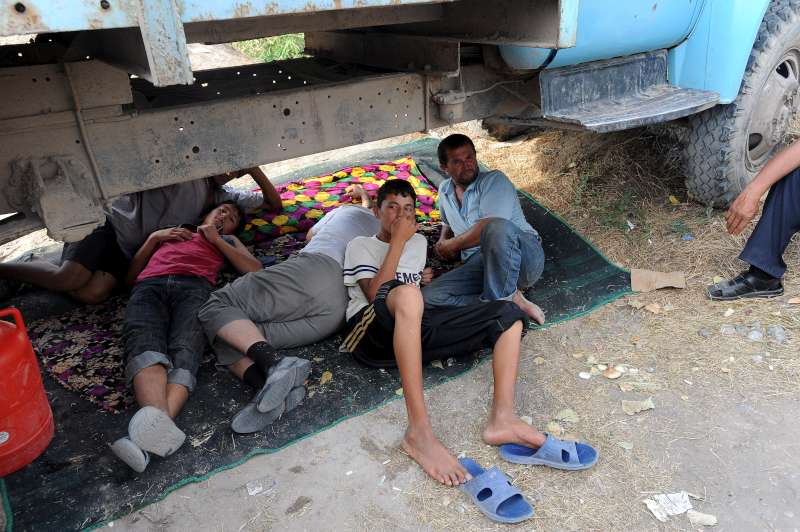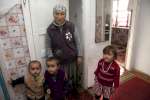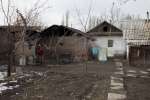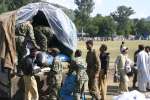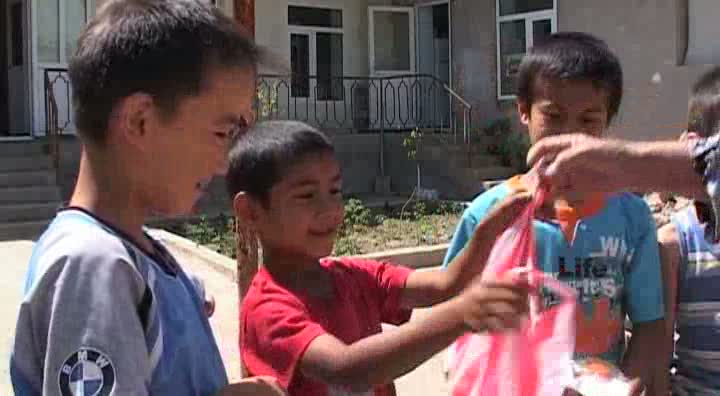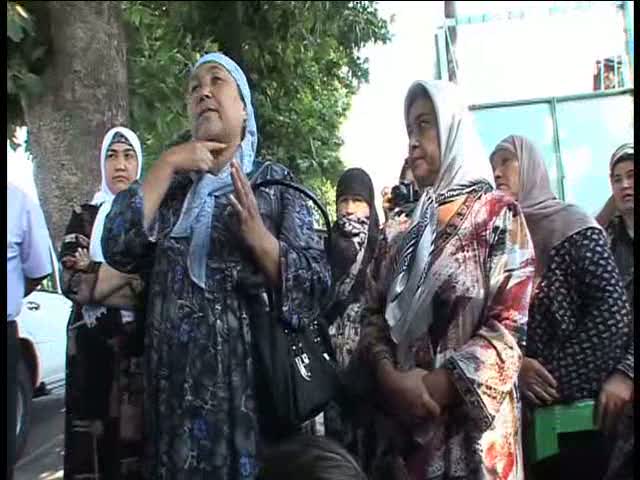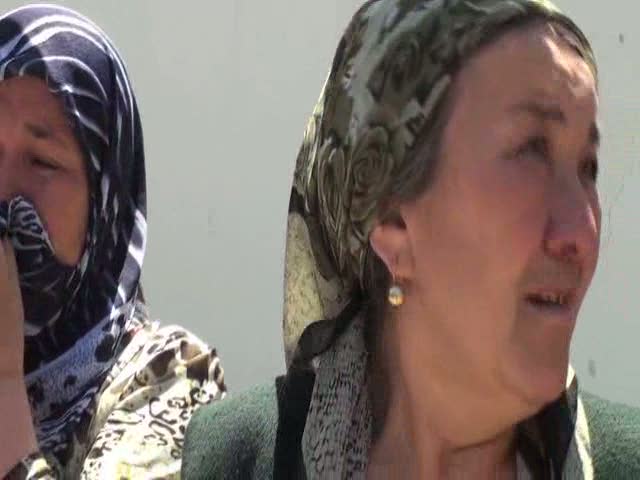A son's wedding feast goes to feed hundreds in southern Kyrgyzstan
News Stories, 24 June 2010
JALAL-ABAD, Kyrgyzstan, June 24 (UNHCR) – Sixty-year-old grandmother Mavludahon spent months putting aside wheat and other food for her son's wedding in the autumn. But over the past two weeks, she has been using the stockpile to feed hundreds of people who have fled to her village to escape violence in other parts of southern Kyrgyzstan's Jalal-Abad region.
Soon after the violence erupted on June 10, thousands of scared civilians passed through the village on their way to seek shelter in nearby Uzbekistan. An uneasy calm has returned to the south, but Mavludahon still hosts internally displaced people (IDP) in the compound of her family's walled home, though many of the estimated 12,000 IDPs in the area began returning home on Thursday.
Only pregnant and elderly women have been staying in the house itself; the rest sleep on carpets laid out on the grass or in the yard. "I don't mind them staying because people need to help each other in this tragic situation," Mavludahon told UNHCR on Tuesday. "Some of them were crying for days after they arrived."
Those now staying with the matriarch are from a second wave of people who arrived in the village on June 14. They were on their way to the border, but unable to cross.
Located only five minutes walk from the border, Mavludahon's village and the surrounding area has been hosting one of the highest concentrations of IDPs in the Jalal-Abad region. Women and children have been staying with host families while the men camped in the open.
Minajathon, aged 90, is the oldest person staying in Mavludahon's home. She can barely walk and had to be helped by neighbours with a car when her village, near the town of Bazar-Korgon, was attacked.
"I thought they wouldn't hurt me because I was old and alone in the house," she told UNHCR. "But, in fact, I only had a minute to get out before the house was burned down in front of me," added the old lady, who was happy to escape but anxious about the future.
"We are well fed, but we cannot stay here much longer," Minajathon said, adding: "We need to do something. We need to go home before the winter."
Forty-five-year-old Hosyaton fled her village with her husband and two grandchildren. They were lucky to stay together. The family fled through their maize fields as armed groups moved through the village, separating the men from the women. "We had to keep our heads down. If we had stood up we would have been seen, even in the maize field," she explained.
Hosyaton said she was hesitant to return to her home village, where ethnic Kyrgyz and Uzbeks had lived in peaceful coexistence. "After seeing so much tragedy, it hurts. Even the locals started shooting. It is okay to heal the physical wounds, but if there is no trust how can we live with them," she said.
UNHCR is urgently rushing more relief items like kitchen sets, jerry cans, blankets and sleeping mats to Kyrgyzstan. Those returning to damaged houses will also need relief aid while they rebuild.
Earlier this week, UNHCR estimated the number of internally displaced at some 300,000, including 40,000 people without shelter. Meanwhile, more and more refugees are returning from Uzbekistan to their areas of origin and urgent shelter interventions will be needed to help them.
By Asel Ormanova in Jalal-Abad and Ariane Rummery in Bishkek, Kyrgyzstan




